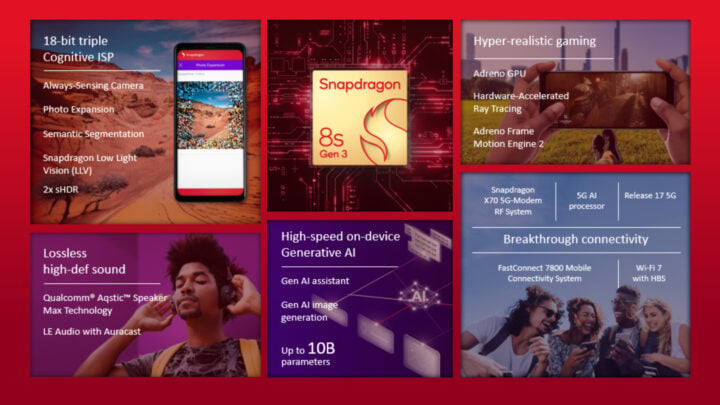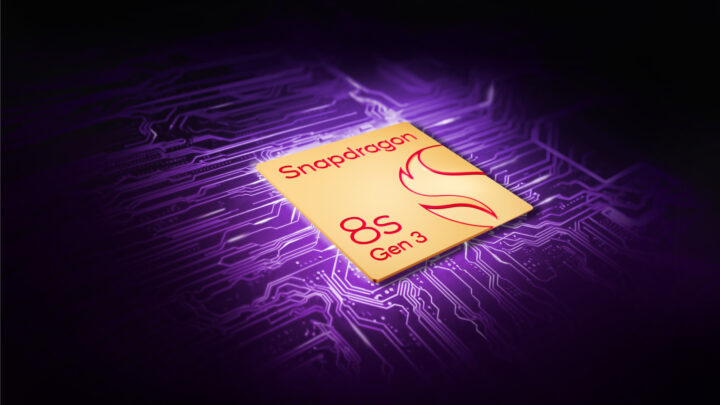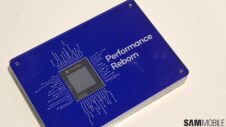Five months after unveiling its flagship smartphone chipset for 2024, Qualcomm is introducing a new high-end chipset. The Snapdragon 8s Gen 3 is a slightly trimmed-down version of the Snapdragon 8 Gen 3 and vows to bring flagship features at a lower cost.
This new chip is made for more affordable high-end phones, popularly known as flagship killers.
Snapdragon 8s Gen 3 has many of the features from Snapdragon 8 Gen 3
The Snapdragon 8s Gen 3 (SM8635) is a 4nm chip made by TSMC, similar to the Snapdragon 8 Gen 3. It will be used in smartphones from Honor, iQOO, Realme, Redmi (Xiaomi sub-brand), and Xiaomi.
This new high-end smartphone processor has many of the same on-device AI and Generative AI processing, advanced camera processing, advanced connectivity, and lossless audio features found on the Snapdragon 8 Gen 3. It can run many popular Large Language Models (LLMs), including Baichuan-7B, Llama 2, and Google Gemini Nano.
CPU
Qualcomm is using a downclocked CPU and one fewer high-performance CPU core in the Snapdragon 8s Gen 3. It has one Cortex-X4 CPU core clocked at 3GHz, four Cortex-A720 CPU cores clocked at up to 2.8GHz, and three Cortex-A520 CPU cores clocked at 2GHz. All these CPU cores are clocked lower than the Snapdragon 8 Gen 3.
GPU
The chipset also features a downgraded GPU (could be Adreno 735) that has real-time hardware-accelerated ray tracing but lacks global illumination effects. It also lacks Unreal Engine 5's Lumen global illumination and reflection effects.
The GPU features Snapdragon Game Super Resolution (AI-powered frame resolution upscaling), Adreno Frame Motion Engine (frame rate interpolation), and 10-bit HDR gaming. It also supports OpenGL ES 3.2, OpenCL 2.0 FP, and Vulkan 1.3 APIs. The GPU can drive 4K 60Hz or QHD+ 144Hz screens. It supports a variable refresh rate (1-240Hz, depending on resolution). It also supports Dolby Vision, HDR10, HDR10+, and HLG video playback. It also supports 1080p 240Hz or 8K 30Hz external displays.
DRAM & Storage
The Snapdragon 8s Gen 3 supports UFS 4.0 storage and up to 24GB LPDDR5X DRAM (4,200MHz). The Snapdragon 8 Gen 3 supports LPDDR5X DRAM clocked at 4,800MHz.
AI/NPU
Qualcomm AI Engine, which combines the processing power of the CPU, GPU, and Hexagon NPU, carries out all the on-device AI and Generative AI processing. It supports more than 30 LLMs and LVMs (Large Vision Models) with up to 10 billion+ parameters. Some of its capabilities include text-to-image generation, on-device Generative AI-powered voice assistant, multi-modal AI (that can take inputs in multiple forms simultaneously), and image/video editing.
Cameras
The Qualcomm Spectra Triple 18-bit ISP inside the Snapdragon 8s Gen 3 supports up to 200MP resolution camera sensors. It can operate a 108MP camera, 64MP+36MP dual-camera setup, or 36MP+36MP+36MP triple-camera setup with zero shutter lag. It can seamlessly switch between cameras with active HDR processing.
It can capture HDR images and videos. In fact, it can record 4K HDR video and a 64MP HDR image simultaneously. It can record up to 4K 60fps HDR videos and slow-motion 1080p videos at 240fps. However, it lacks support for 8K video recording, which is present on the Snapdragon 8 Gen 2 and the Snapdragon 8 Gen 3.
It supports Google's Ultra HDR video format (Samsung's Super HDR is powered by this feature) and supports recording HDR videos in Dolby Vision, HDR10, and HDR10+ formats. Features like multi-frame noise reduction, video upscaling, and RAW image capture are also supported.
Connectivity
The Snapdragon 8s Gen 3 has a fully integrated Snapdragon X75 5G modem, the same modem used in the Snapdragon 8 Gen 2 processor. It supports up to 5Gbps download speeds and up to 3.5Gbps upload speeds. It supports SA and NSA 5G networks over sub-6GHz and mmWave bands. For sub-6GHz bands, it supports 4×4 MIMO, while 2×2 MIMO is supported for mmWave networks.
It also supports 8 CA (Carrier Aggregation) and 5G + 5G Dual-SIM Dual-Active SIM. Several AI-powered power-saving features for 5G connectivity and configuration are also included in this chip.
Powered by the Qualcomm FastConnect 7800 system, the Snapdragon 8s Gen 3 features triple-frequency GNSS (BeiDou, GPS, GLONASS, Galileo, NavIC, and QZSS), Wi-Fi 7 with 8×8 MIMO, Bluetooth 5.4 (with LE Audio and Auracast, aptX Lossless, and aptX Adaptive), and USB 3.1 Gen 2 (with Type-C port).
Phones with Snapdragon 8s Gen 3 to launch in March 2024
Xiaomi will be the first to launch a smartphone using the Snapdragon 8s Gen 3 chipset. Other brands will bring their Snapdragon 8s Gen 3-equipped phones later this month (March 2024).
Chris Patrick, Senior Vice President and General Manager of the Mobile Handsets division at Qualcomm Technologies, said, “With capabilities including on-device generative AI and advanced photography features, Snapdragon 8s Gen 3 is designed to enhance user experiences, fostering creativity and productivity in their daily lives. We’re elated to introduce the latest addition to our premium Snapdragon 8-series, our most premium mobile offering, bringing a host of exceptional specially selected capabilities to more consumers.”
To check out the performance of the Snapdragon 8 Gen 3, watch our Galaxy S24 Ultra review in the video below.








